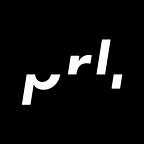Our Experience at Fluxible, Canada’s UX Festival
Fluxible is considered “Canada’s UX Festival”, and covers all things user experience design, and this year was bigger than ever. This week-long event holding meetups and workshops, capped off with a 2-day conference over the weekend which we attended in Waterloo. Paul, one of our developers, gave us a recap of the event.
Organization/Structure
There is currently a trend in the industry to educate executive-level managers in “design-thinking”. One of the talks argued that it might be more effective to educate designers in business instead. Design, like engineering, is centered around problem-solving. Having the right governance and vision is crucial to business success, and understanding how to shape customer experience is an increasingly important tool.
Similarly, companies are now evolving their corporate structure so that designers and engineers can collaborate throughout a project’s lifespan, rather than one handing it off to the other, then not seeing it again until review. This allows for more iteration, creativity and ultimately a better product or service at the end.
Strategy
While some talks focused on the high-level “business of design”, there were also many relating to the day-to-day process of design work.
One of the key takeaways from these talks is that companies are building processes for every phase of a project, and that while it may seem rigid, these frameworks actually allow for a lot of creativity.
For example, some talks focused exclusively on the process of “discovery” — the first phase of a project when everyone is trying to figure out what this new project actually is. Another demonstrated how to iterate on content the way a typical visual project might do it — by starting with low-fidelity mockups, eventually converging on a high-fidelity standard that is consistent throughout the company and product.
Another still tried to define “experience” (a nebulous, intangible concept) in a repeatable framework using the metrics: viscosity, tolerance, persistence and presence.
All of these tools are used to “make sure you’re building the right thing, not just the thing right”, as one presenter put it.
Impact
All of this work — setting up the right governance, a cohesive team structure, project frameworks, and implementation — are pieces of a successful project. It adds up to tremendous impact for the customer.
Solve a problem. Support the customer. Deliver bad news gracefully. Avoid intrusion, but be available. Be empathetic and trustworthy.
If you can do all of that, you will have happy users. Metrics such as adoption, retention, satisfaction, engagement and efficiency, you know, the ones that ‘matter’ — will all be driven as a result.
It’s always valuable to hear fresh perspectives and expand our thinking. While some of the ideas discussed are ideas we have already put into practice in how we work, there were some new territories that we look forward to exploring further.
